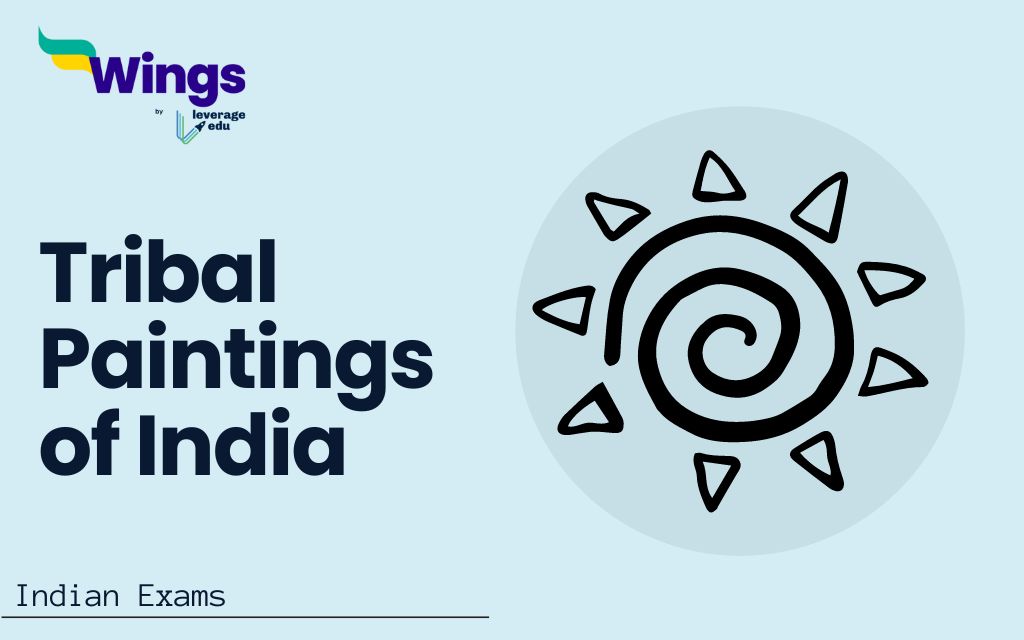Over 2500 different tribes and ethnic groups call India their home. These groups’ great diversity has contributed to a variety of artistic mediums, including folk and tribal art. Warli paintings, Bhil and Gond paintings, Santhal paintings, Madhubani paintings of Bihar, Saora paintings of Odisha, and Pithoro paintings of Gujarat are a few of the well-known tribal art styles in India. These tribal arts are quite basic and ethnic. They are mostly performed by the members of their tribe, and they have unique, colorful designs that frequently depict local heroes and their deities in myths and folklore.
Contents
Top 5 Tribal Paintings of India
India’s 2,500 tribes and ethnic groups have enriched the country with diverse art forms. Though traditional methods using natural elements have given way to modern paints and canvases, these expressions continue to hold great value. Here’s a peek into five such art forms
1. Warli Painting
Belonging from Maharashtra, Warli art is practiced by the Warli tribe, one of India’s largest to have largely resisted modern influences. Their paintings celebrate the beauty of nature – trees, animals, and scenes from daily life – depicted in a simple and charming style. Natural elements like rice paste and gum are used to create these earthy paintings, traditionally done by Warli women on mud walls. The absence of mythological themes sets Warli art apart, focusing instead on the simple joys of life and the interconnectedness of humans with nature.
Also Read- History of Indian Art; Origins, Milestones
2. Gond Painting
Central India’s Gond tribe expresses their love for life through vibrant Gond paintings. Lush hills, flowing rivers, a dazzling array of birds and animals – these are the central themes in Gond art. Traditionally painted on mud walls, these artworks are known for their intricate details and energetic lines. The artists use a technique called “linework,” where both the inner and outer lines are carefully drawn, creating a sense of movement and depth. Natural materials like charcoal, colored soil, and plant sap bring these paintings to life in a symphony of bright colors – white, red, blue, and yellow.
Also Read – Traditional Art Forms of India
3. Madhubani Painting
Madhubani paintings, originating from the Maithili region of Bihar, are a visual expression of a woman’s inner world. Traditionally created by women on the walls of their homes, these paintings depict stories from Hindu mythology, local folklore, and everyday life. Natural dyes and pigments are used to create geometric patterns, floral motifs, and vibrant depictions of birds and animals. The paintings are characterized by bold outlines, flat colors, and a lack of shading. Today, artists use a wider range of tools and materials, keeping the essence of this beautiful art form alive.
Also Read – History of Indian Art
4. Pattachitra
The word “Pattachitra” translates to “image on cloth” in Sanskrit, aptly describing this unique art form from Odisha. This vibrant art showcases themes from Hindu mythology, religious stories, and local folklore. Interestingly, the style is quite structured, with specific guidelines and limitations. Natural paints are used to create simple yet captivating depictions of deities on cloth canvas. This art form is closely associated with the Jagannath cult and the temple traditions of Puri. The paintings are known for their distinctive style, featuring elongated eyes, prominent use of solid colors, and intricate floral borders.
Must Read:Mysore Painting: History, Technique and Motifs
5. Pithora Painting
Pithora paintings, practiced by the Rathwa and Bhilala tribes of Central Gujarat, are deeply rooted in ritualistic traditions. These colorful wall paintings are a form of prayer, seeking blessings from the tribal god, Pithora Baba. Horses, a recurring motif, symbolize the seven hills surrounding the Gujarat-Madhya Pradesh border. The paintings are created with a mix of natural colors like white, orange, green, and blue. Unmarried girls traditionally prepare the walls with a special clay and dung mixture before the artist, known as a Lakhara, begins his work. The paintings are usually confined to rectangular spaces and depict mythological stories or cherished events from Rathwa life.
FAQs
Warli, Gond, Madhubani, Pithora, and Santhal art are notable tribal art forms in India.
Tribal paintings are often referred to as “tribal art” or by specific names like Warli, Gond, or Madhubani.
Madhya Pradesh is famous for Gond art, Odisha for Warli art, and Bihar for Madhubani art.
The Warli tribe of Maharashtra is renowned for their distinctive and intricate wall paintings.
This was all about the “Tribal Paintings of India”. For more such informative blogs, check out our UPSC Exams Section and Study Material Section, or you can learn more about us by visiting our Indian exams page.
 One app for all your study abroad needs
One app for all your study abroad needs














